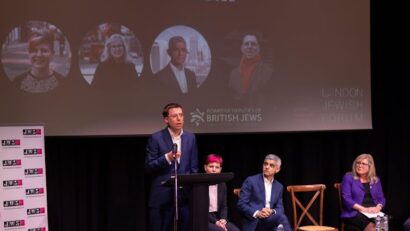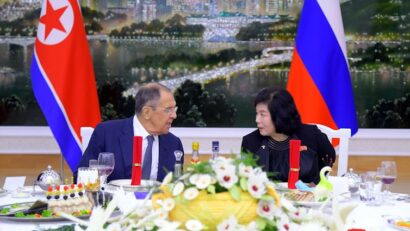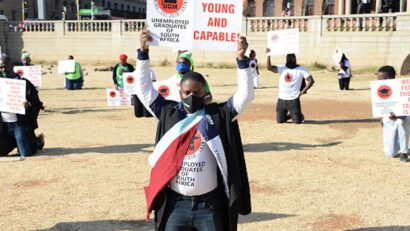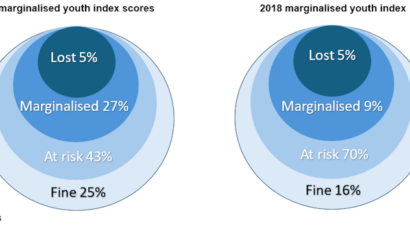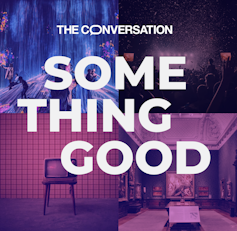
Wiley’s Treddin’ on Thin Ice at 20: revisiting a blueprint that continues to shape grime
In April 2004, Wiley released his debut album Treddin’ on Thin Ice. The MC’s first full-length project after years of releasing tracks and performing at raves and on pirate radio, Treddin’ on Thin Ice is undoubtedly a foundational part of grime’s history.
The album not only delineates and establishes grime’s distinctive sound at the turn of the century, it also represents a key work through and against which subsequent grime artists have continued to define and develop the genre.
For British author Jeffrey Boakye, the album represents “a moment of self-promotion and self-realisation for Wiley that transcends the individual and begins to raise a culture”. April marks 20 years since the release of Treddin, now considered a seminal grime album.
Among the most significant musical developments within the UK music scene in recent decades, grime grew from a highly localised east London-based subculture to a national and global cultural phenomenon.
The culmination of this growth came in 2019 when Stormzy became the first black British solo artist to headline Glastonbury festival. This historic performance, coupled with the chart success of his debut album Gang Signs and Prayers, marked grime’s commercial rise into the British cultural mainstream from underground obscurity.
Alongside Dizzee Rascal’s Boy In Da Corner (2003), Treddin’ On thin Ice is considered to represent a blueprint for one of Britain’s most exciting music cultures. Wiley’s debut helped to define grime against preceding UK musical trends and established a powerful visual and aural model for future artists.
It’s not garage
Until the genre’s mainstream rise in the 2010s, grime’s stars were relatively few.
Eskibeat – Wiley’s own term for his early sound – was a “defiantly low-rent mass of jabbing rhythms, crude samples and rumbling bass frequencies” that established a powerful aesthetic model for future artists.
Treddin’ marked grime’s separation from garage and other prevailing musical trends. Wiley does this not only through sound but in what he says as he draws comparisons and differences between his own sound and what came before.
Wiley establishes a musical meta-commentary on the evolution of grime from garage in the album’s first single Wot Do U Call It?:
Here in London there’s a sound called garageBut this is my sound, it sure ain’t garageI heard they don’t like me in garageCause I use their scene but make my own soundThe Eskimo sound is mine
The instrumentals Eskimo, Avalanche, and Ice Rink further the delineation, crafting grime’s soundscape and introducing what will come to represent the genre’s key musical and extra-musical characteristics. In particular, these songs engender and embody the scene’s association with “coldness”. Coldness describes the experience of radical alienation, or the articulation of black urban life on the margins of British society – “it’s a cold, dark sound because we came from a cold, dark place”.
Grime: from infancy to adolescence
Wiley is credited with not only fuelling grime’s emergence from the British underground’s post-garage music scene but also for carrying the genre from its infancy through to adolescence. He mentored pioneers Kano and Dizzee Rascal, as well as grime’s second-wave heroes Skepta and Stormzy.
He also did much to pioneer grime’s early methods of production, distribution, promotion and consumption. Wiley appeared on pirate radio stations (both independently and with his crew Roll Deep) and sold his own record pressings to independent stores, as well as directly to customers from his car.
He released music on white labels (produced in small quantities and distributed without any official labels or branding) and dubplates (test recordings prior to mastering on which many early cuts from Treddin’ first appeared) and founded rave and club nights, including the now-legendary Eskimo dance.
It is his musical influence, however, that remains Wiley’s most significant contribution. The “Eskimo sound” and grime are essentially different only in name.
Skepta’s Mercury prize-winning Konnichiwa (2016), deemed a triumphant return to grime’s key aesthetic principles and golden-era sound, is essentially a nostalgia trip that does not revive and reinvent grime’s early sound palette so much as simply restate it. More specifically, it restates Wiley’s sound palette: Ice Rink and Pies, both of which feature on Treddin’, for example, form the musical and lyrical building blocks of Konnichiwa’s pivotal lead single That’s Not Me.
Skepta’s use of the tracks in this way shows that grime music continues to be defined largely by the extent to which it relates to the music that initially defined it. At 20, Treddin’ remains as powerful and important as ever.
Wiley, however, has fallen from grace following a torrent of antisemitic remarks he made on X in 2020. As a result, he has been dropped from his management company, banned from virtually all forms of social media, and has generally faded from public consciousness.
As Wiley continues to face the deserved consequences for his bigotry, his spectacular fall leaves a tangible absence in grime’s musical and cultural tapestry. A figure both symbolic of and synonymous with grime’s noughties golden era, the cultural space that surrounds Wiley is no longer habitable. The scene moves on.
As grime’s constellation continues to alter, however, and its stars remain in motion, the question persists as to whether the scene can ever truly detach itself from the giant whose heat can still be felt.
Looking for something good? Cut through the noise with a carefully curated selection of the latest releases, live events and exhibitions, straight to your inbox every fortnight, on Fridays. Sign up here. Läs mer…
